Editor’s Note: This post was originally published in May 2015 and has been updated for accuracy and comprehensiveness
Sleep training with a pacifier is one of my favorite mom hacks. What’s the difference between using a pacifier as a sleep training tool instead of as a prop?
The use of a pacifier sounds like a good idea and can often be seen as a magical item, especially for new parents. It can quiet a crying baby. Calm a fussy baby. Make a car ride bearable. Help a baby to sleep.
When you’re a mom trying to implement the Babywise sleep training method, however, a pacifier can be a downfall.
Sure, the binky helps the baby fall asleep, but then what?
You think the baby is down for the night. The quiet hum of the sound machine over the baby monitor says they are asleep.
But then the moment of dread occurs.
The pacifier falls out of baby’s mouth and BAM! They are awake and crying.
So then it’s up to Mom (or Dad!) to go in and out, and over and over re-inserting the dummy into baby’s mouth. This results in countless night wakings for baby and for the rest of the family!
It can be a headache, a hassle, and can quickly run the risk of becoming a sleep prop. Here is how sleep training with a pacifier works when you use it as a tool instead!
The paci goes from helping baby to fall asleep to being an object the baby has to have in order to sleep. But pacifiers use can make great sleep tools if used properly.
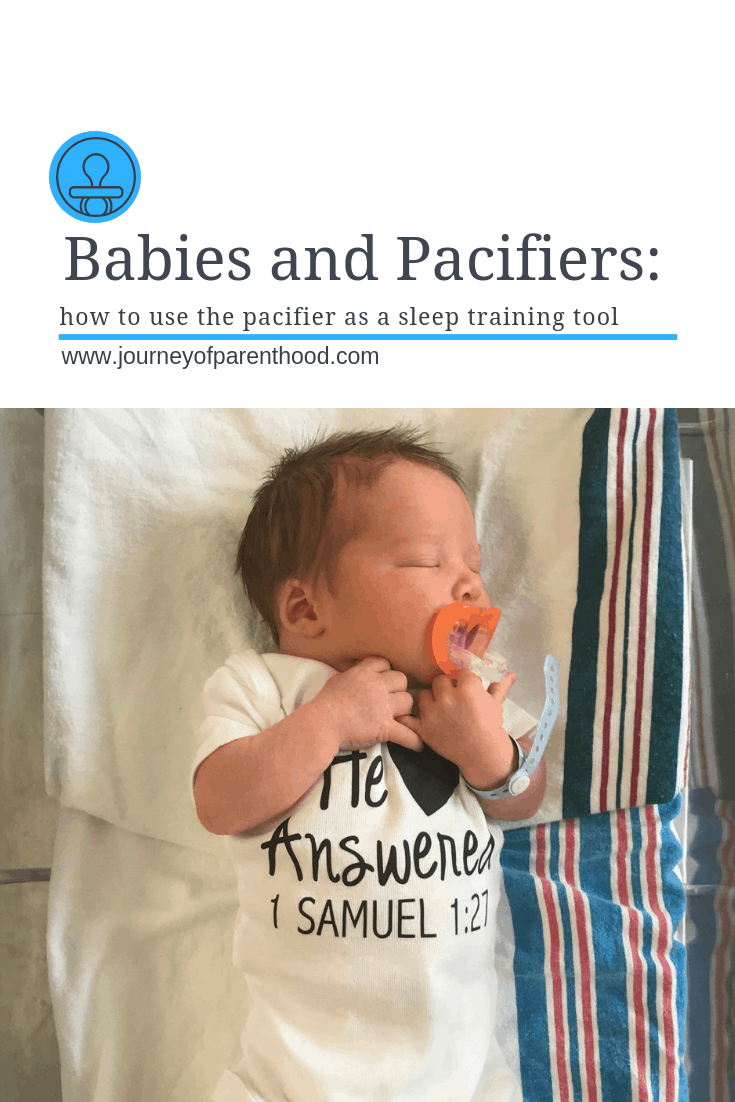
Disclaimer: post contains affiliate links
What is a Sleep Prop?
Sleep props can be anything that your child needs in order to fall asleep, from a pacifier to a stuffed animal.
With Babywise sleep training method, (or any sleep method!) the ideal is to avoid sleep props and instead allow the baby to learn how to self-soothe and fall asleep on their own.
You want to be able to say “Okay baby, it’s time for sleep sleep” and then simply lay them down and have them completely start sleep without help from Mom, Dad, or any sort of prop device!
For me personally, using the pacifier with my first baby caused me a lot of guilt.
My baby was addicted to the pacifier and I felt like it was my fault.
I’m the one who introduced it to him. I’m the one that allowed it to become his favorite comfort object. No sleep coaching or certified sleep consultant. Not a nanny or a grandparent. It was on ME.
So I paid the consequence by going in and out of his bedroom several times to put my baby’s pacifier back into his mouth until he was old enough to do it himself (which felt like an eternity).
Once I weaned my first child from the baby pacifier, I swore I’d never use one again. No way.
However, after four sleep-trained kids, I have learned the best way to effectively implement sleep training with a pacifier while also not allowing it to become a prop.
Wondering how sleep schedules work as baby grows? These sample Babywise schedules take you from the newborn days to six months!
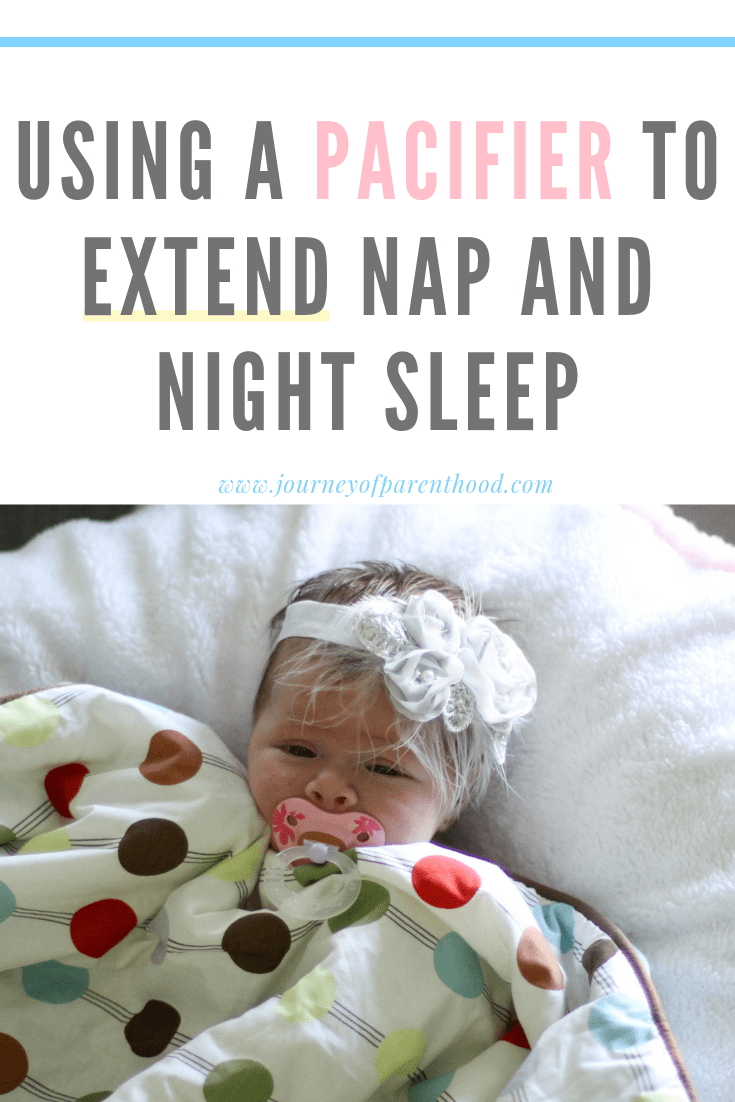
How to Avoid Introducing the Pacifier
In order to avoid the pacifier addiction, I don’t introduce the pacifier to my babies.
The sleep training process begins even when my babies are newborns as my goal is to set them up for sleep success right from the start.
Yes, people will comment about pacifier usage or lack thereof.
At the hospital, even they will suggest a dummy when the baby cries. And yes, according to the American Academy of Pediatrics, they are supposed to have a protective effect against the risk of sudden infant death syndrome.
While there are benefits of pacifiers, it also doesn’t mean the use of pacifiers is a good thing, either. We are the parents and we decide what items we use and bring into our home.
Newborn sleep props can make sleep training tougher right from the start. During the newborn stage, babies tend to get great sleep. So much so that the newborn phase can trick a lot of parents into thinking the pacifier is no big deal.
But as your newborn baby “wakes up” and has longer awake times, the sleep deprivation will shortly follow. Those night sleeps will turn into short naps and a struggle with the sleep training process!
And then if you have a pacifier sleeper, you have to deal with breaking baby sleep associations during the first year or later… unless you think your kids will want sleep props as older children or adults!
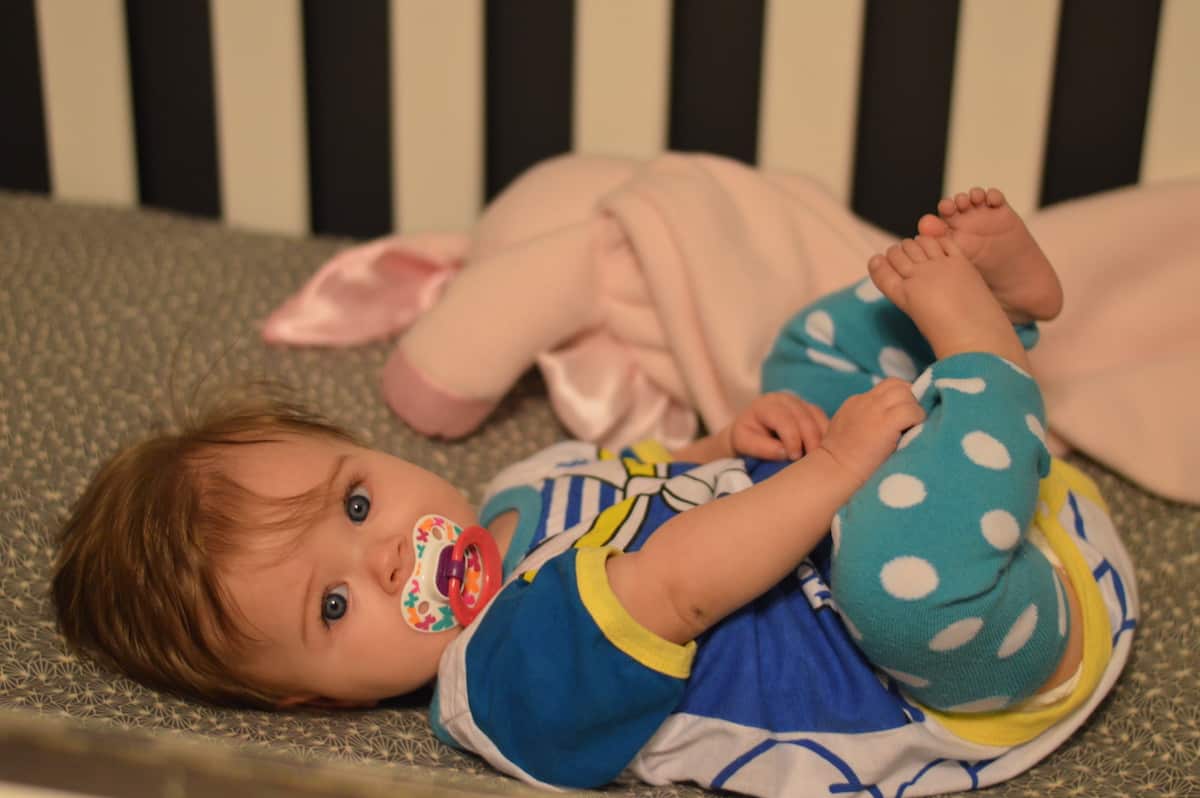
While nursing babies everyone knows that early pacifier usage for non-nutritive sucking can interfere with successful breastfeeding by causing nipple confusion.
Lactation consultants will tell you that a breastfed baby’s mouth can get confused when switching between sucking on the artificial nipples and obtaining food from breastfeeding. This can even affect breast milk supply.
But even with my
I wanted to be able to fully learn his crying cues.
How to tell when he was crying out of hunger or sleepiness.
I wanted to allow him to learn how to fall asleep on his own at nap time and bedtime without using any sort of prop or tool in order to establish those sleep cycles.
I owned baby pacifiers and I took the ones the hospital gave me, but I didn’t use them.
I simply held onto them and waited until the timing was right for when they could be beneficial to help my babies sleep through the night and through their full naps without them developing a strong need for them.
While I wait to introduce a pacifier until later in life, I start swaddling my babies from birth.
Swaddling has many sleep benefits and helps babies avoid waking themselves up from uncontrollable movements while sleeping.
Sleep associations are tools that help your baby sleep and the swaddle is THE tool I recommend the MOST!
—–> Here are my favorite items to help set your baby up for sleep success!
While the swaddle isn’t nearly as difficult to wean from as other sleep props (like the pacifier) can be, there are steps to take to make the swaddle weaning experience easier!
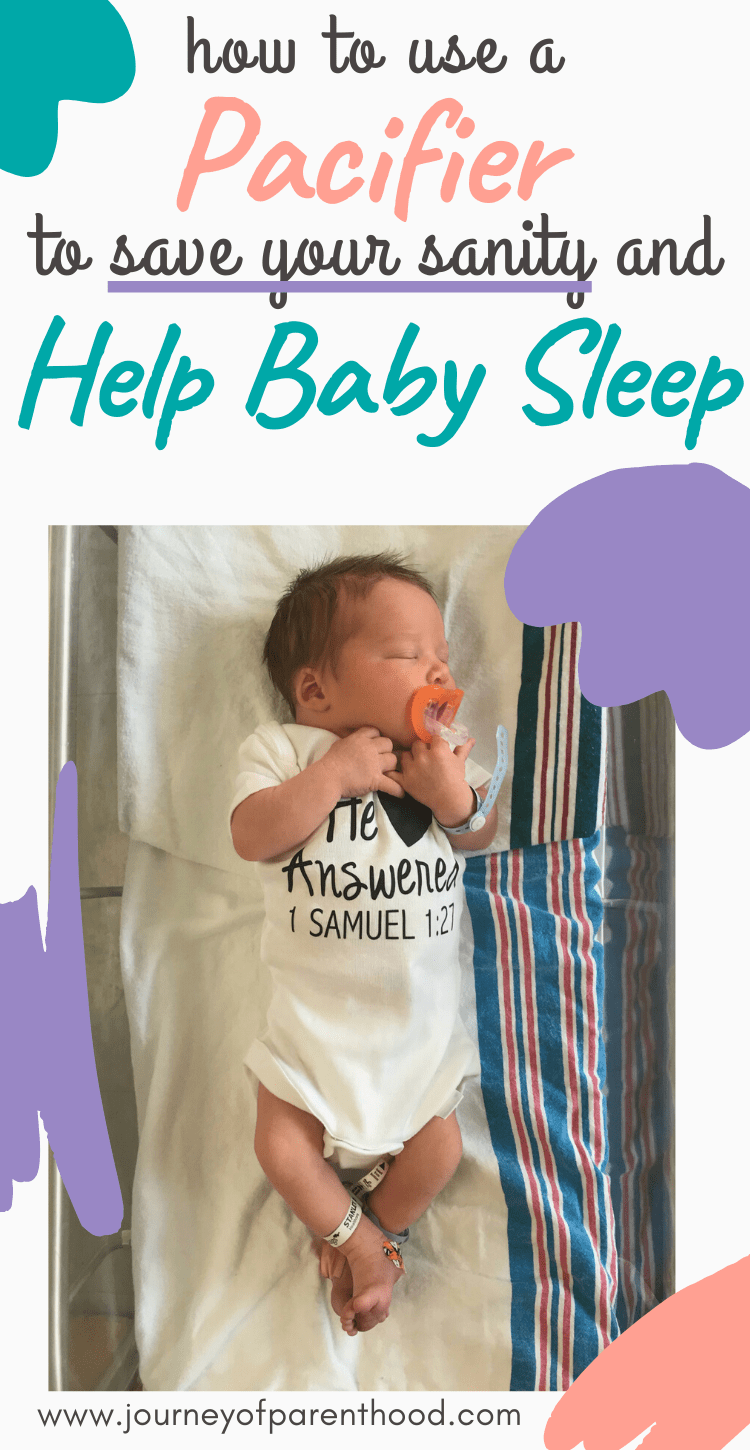
When to Start Using the Pacifier
For the first couple of weeks, it’s important to respond to the baby’s cries.
If my young baby cried, I fed him. After the first two weeks of feeding on demand, all of my babies fell into a natural three-hour eating schedule and routine. No, I’m not a sleep consultant, I’m just a mama who loves SLEEP.
I have a whole post dedicated to sleep tips for your newborn that I highly recommend you check out!
Once my healthy babies turn two weeks old, I start implementing a Babywise sleep schedule.
It’s then that I may start to use a pacifier as needed.
By two weeks, from my view, I have had that bonding time to really learn my baby and they are on a solid eating routine and better able to eat effectively.
This allows me to offer the pacifier at certain times without worrying about nipple confusion or that my baby is crying due to hunger.
How to Use the Pacifier at Naps
The pacifier is a wonderful sleep-training tool when used effectively.
First, I never ever offer my baby the pacifier at the start of sleep time.
My babies learn from early ages how to self-soothe and fall asleep on their own without help from Mommy or a pacifier sleep prop.
When the baby wakes up before nap time is over, I wait.
It’s important to let the baby fuss a little bit as they often will settle back to sleep on their own and continue their sleep cycle.
If they continue to cry and seem unable to settle, I do everything possible to get them back to sleep.
First, I will keep them in the crib but gently pat them and say “shhh.” (If you don’t know about the 4 s’s for sleep help, be sure to read my post about it!)
If that doesn’t soothe them back to sleep, I will pick them up and offer comfort then lay them back down in the crib.
If that still doesn’t work, I will move them to a swing or bouncer. FINALLY, if NONE of the other methods help them fall back to sleep, I will offer the pacifier as part of sleep training.
The pacifier may help give them the comfort they need in order to fall back to sleep for the remainder of their nap. This is extremely helpful during the 4-month sleep regression.
Most naps, the baby will sleep solidly for the entire nap.
And most of the time, if they do wake, then one of the earlier methods will help them get back to sleep.
The pacifier is truly a last resort but can often be the thing that does the job and lulls baby to sleep for the remainder of their nap time.
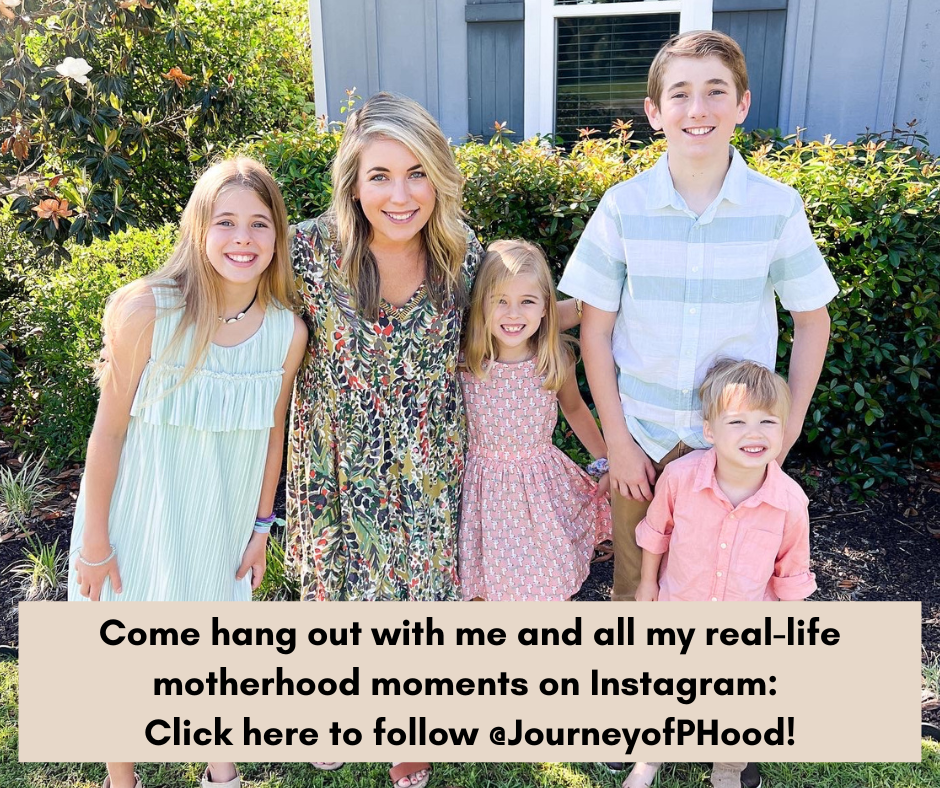
How to Use the Pacifier at Night
Most of the time if I need to use a pacifier for sleep training, it’s during the middle of the night.
An early goal with a new baby is to get them sleeping through the night and often that can be achieved through the help of a pacifier.
Again, I always put my babies down to sleep without any sort of sleep prop. They fall asleep completely on their own.
Once my baby is back up to their birth weight I will stop waking them to feed in the middle of the night.
I typically do a dream feed and then just go to bed and cross my fingers hoping they will sleep through the night!
Most of the time a baby under two months old will wake up for 1-2 feeds before their ideal morning wake time.
When my babies wake in the middle of the night I try to let them fuss a bit. See if they settle back to sleep on their own. If not, then I will go ahead and feed them.
As they get older and go down to the one middle-of-the-night wake-up feeding I will utilize the pacifier as a sleep tool to train them to sleep through the night.
If they wake crying, I will go in and insert the pacifier right away in hopes that it will result in the baby falling asleep instantly rather than fussing and getting themselves more awake or more worked up.
If the pacifier falls out within 5 minutes and the baby is crying again then I will go back in and reinsert the paci.
If this cycle happens three times then I know the baby is truly hungry and will go ahead and offer that feeding to them and put them right back to bed, without the pacifier.
The goal is for the baby not to wake at all in the night but the pacifier can really help in dropping that last middle of the night feeding and helps to know if the baby is truly hungry when waking in the night or if they are just needing to resettle.
Rather than being part of a baby’s bedtime routine, the pacifier is only used on an as-needed basis.
The Pacifier as a Sleep Tool: Not a Prop
When used in these ways, the pacifier is a sleep-training tool and never becomes a sleep prop.
The baby never needs the binky in order to sleep.
It is simply a tool in my parenting toolbox to help during moments when my baby can’t settle themselves, when I’m troubleshooting a sleep problem, to see if the baby is truly hungry or to help them sleep for their full nap and through the night.
Typically a three-month-old baby is fully sleeping through the night and solid for their naps and very rarely is the pacifier ever used again.
There is no need to wean from the pacifier, no need to go cold turkey, and no dealing with a two-year-old who is dummie-obsessed.
The baby just sleeps. The baby falls asleep. The baby stays asleep.
They sleep solid, they don’t wake early, and therefore they don’t use the pacifier either!
They are getting that deep sleep and high-quality sleep we all really want!
It’s never something they miss as it wasn’t ever something they used on a regular enough basis to truly desire or crave.
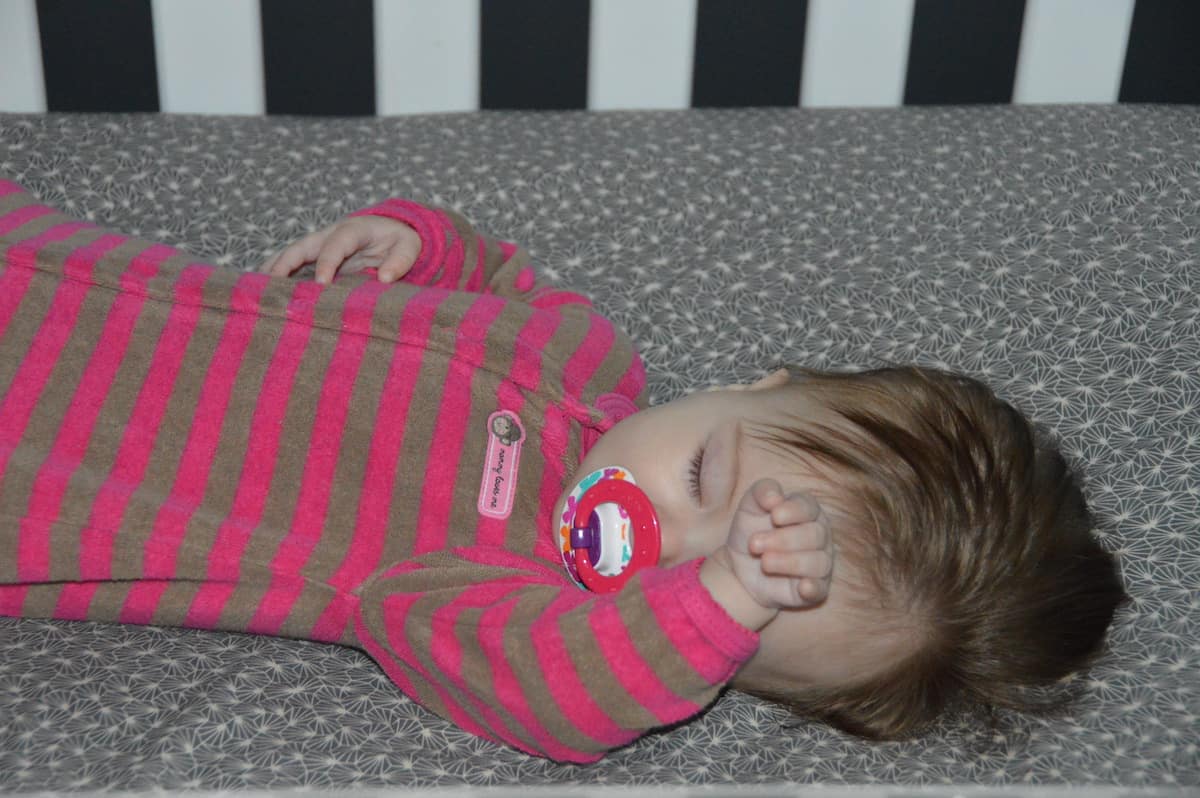
Final Thoughts
The pacifier can easily become a sleep prop but by restricting its use to only the middle of the night or middle of nap wakeups it can be a genius sleeping tool!
Baby sleep can be a huge struggle for mamas but with a solid plan in place and helpful tools in your parenting toolbox, your baby will sleep better and longer at all months of age…and so will you.
Toddler sleep and child sleep are both equally important as infant sleep and by starting off using sleep training techniques from an early age you can have an awesome sleeping baby who only continues to sleep well into adulthood!
Here are three things you need to know about sleep training.
Pacifiers and Sleep Training
The internet is full of parents looking for advice for issues like “What to do when pacifier keeps falling out,” “How to keep pacifiers in crib,” “How to keep pacifier in mouth at night,” and more. Granted most of these Google searches were done while many parents were sleep deprived and hallucinating.
These issues can be avoided when you use pacifiers as a tool for sleep training. I’m not saying ‘never use a pacifier at night’ or ‘avoid the pacifier while sleeping altogether.’ Instead, I’m saying use it strategically.
My sleep training strategy may involve a night or two where you feel like you are replacing the pacifier all night, but this will quickly shift as your baby adapts to fewer feedings at night.
Looking for other info on pacifiers? These posts are for you:
- Babywise and the Pacifier
- Weaning from the Pacifier
- How to Get Rid of Pacifier Sleep Prop
- Pacifiers: Are You Ruining Your Baby?
- A Letter to my Son on His 16th Birthday From Mom (Kye’s Bday Letter) - March 20, 2025
- Open Letter to my Daughter on her 12th Birthday – Love, Mom {Britt’s 12th Bday Letter} - January 16, 2025
- Letter to My Son on his 6th Birthday – Love Mom - January 8, 2025

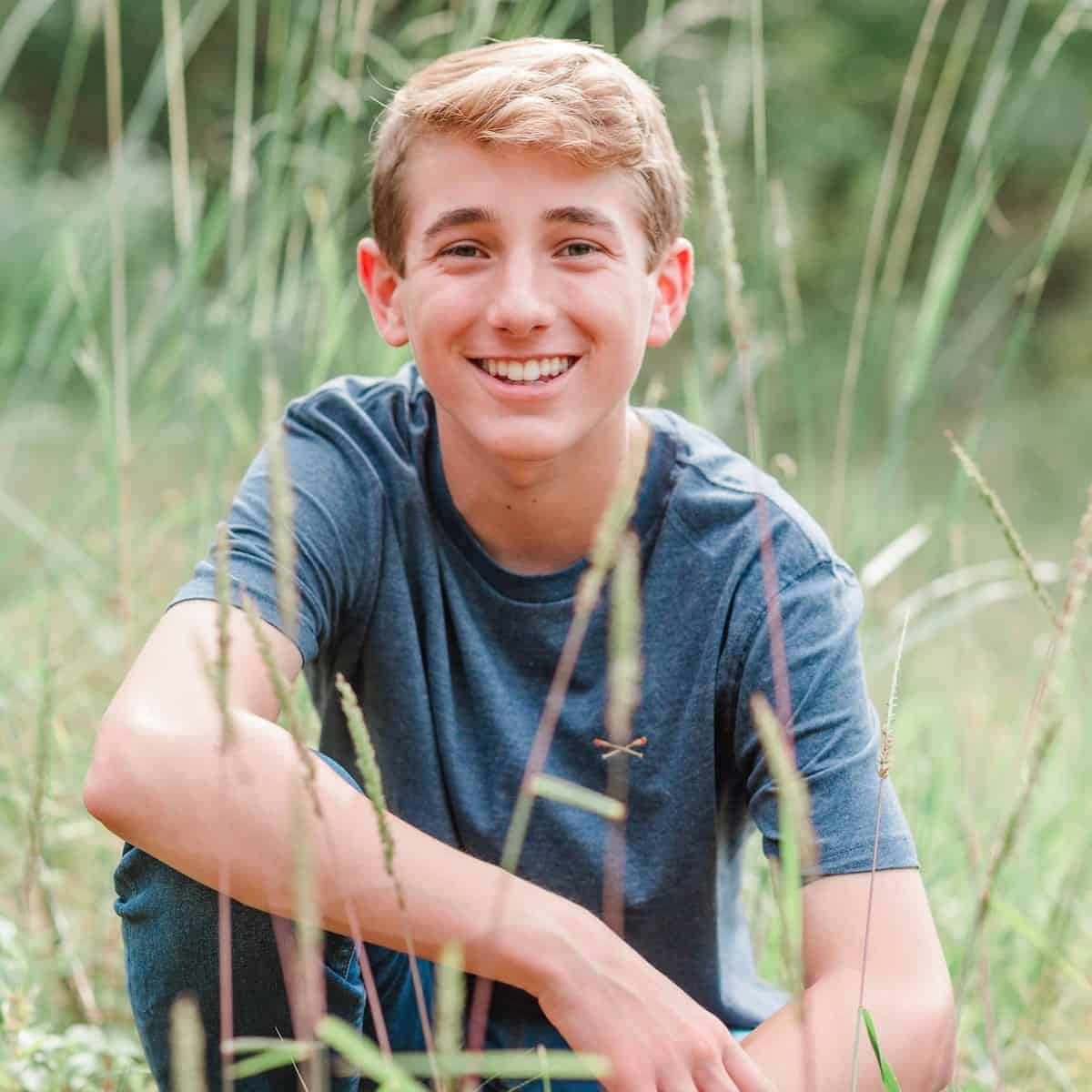
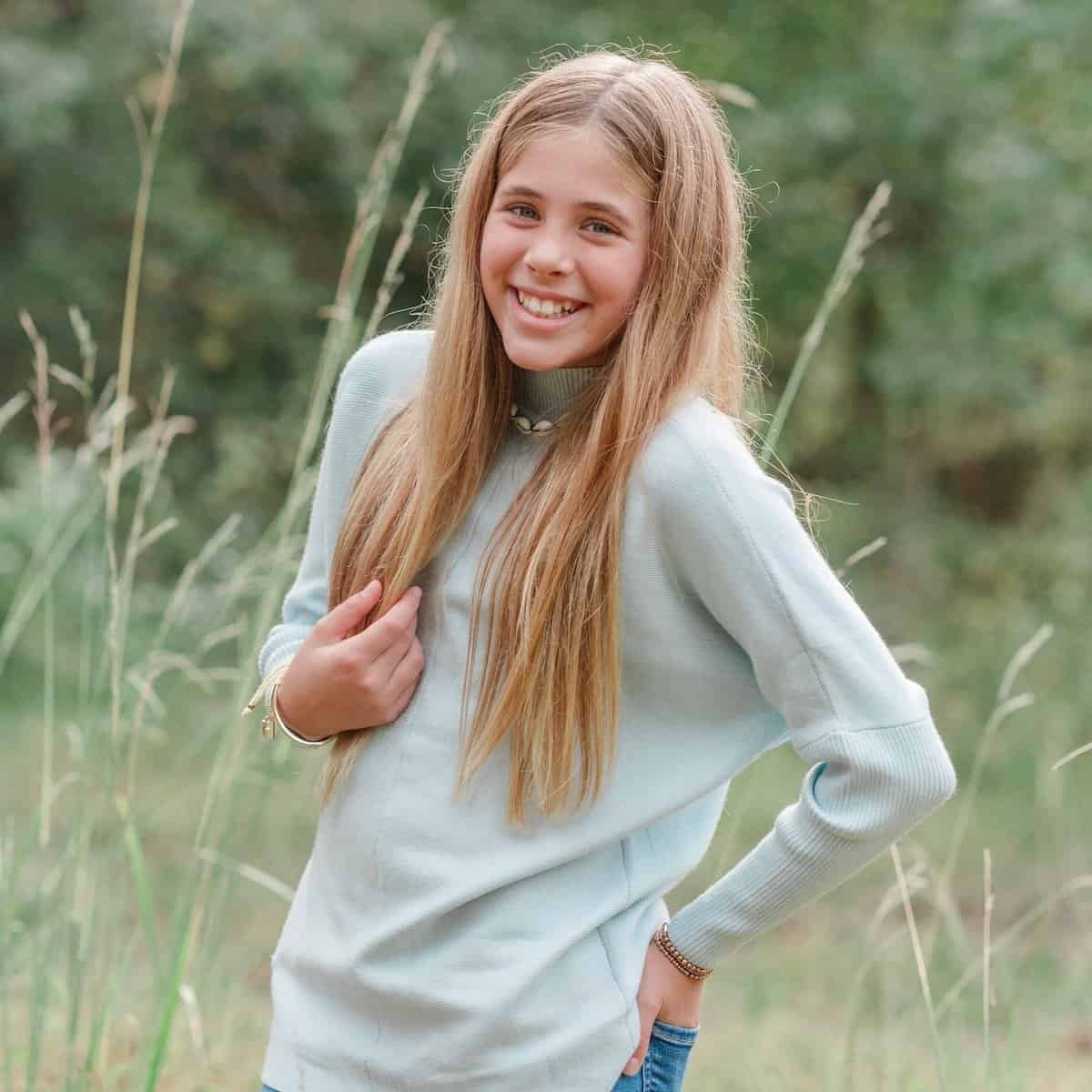




Hi, pacifier is a friend, until it’s not 😉 after sometime a baby cannot sleep without it, or in fact won’t be able to do anything without it, so my natural move was to try getting rid of it, not an easy process 🙁 any help was appreciated with getting rid of it. Simple steps to follow, good content, experienced mother. Great read, recommend to anyone struggling with parental stuff.
This is a great article — thanks so so much for posting it. It’s hard to find practical tips on how to use pacifiers ‘well’, despite it being a very common sense question parents have (ie I don’t want to create a sleep prop, but are there ways to use it to help aid babies sleep without causing these issues?).
Author
Yay! SO glad it was helpful for you 🙂
The article said ” The goal is for the baby not to wake at all in the night but the pacifier can really help in dropping that last middle of the night feeding and helps to know if the baby is truly hungry when waking in the night or if they are just needing to resettle”
Any advice on how to “drop that last middle of the night feeding”? Is the pacifier shows that they are not actually hungry?
Author
YES! I actually have a post all about that as well: https://www.journeyofparenthood.com/how-to-drop-last-motn-feeding/ hope it helps!